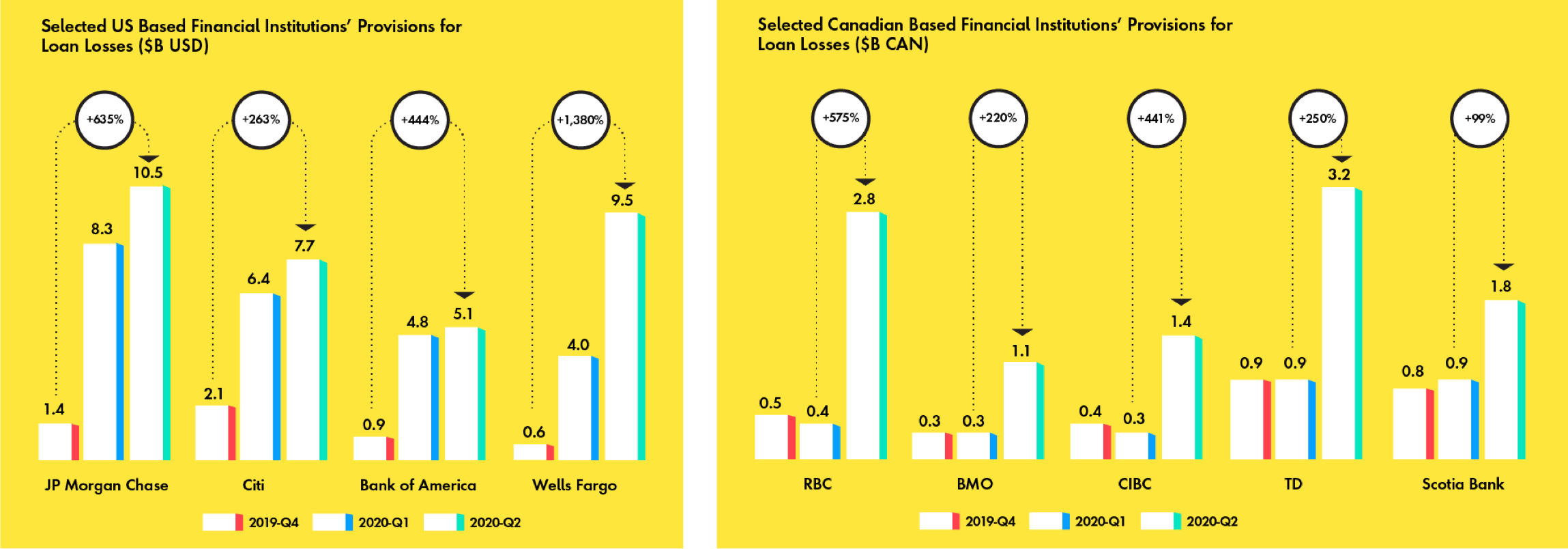What issue can we solve for you?
Type in your prompt above or try one of these suggestions
Suggested Prompt



Insight
Banks Should Focus on Customer Experience to Lessen Hit from Credit Losses
Banks Should Focus on Customer Experience to Lessen Hit from Credit Losses
Helping consumers get through the economic fallout precipitated by the COVID-19 crisis while mitigating credit losses will be a multi-billion-dollar challenge for banks during the next three years. Long-valued customers will remember how their financial partners treated them in their time of need, and investors will watch loan-loss reserves carefully to determine viability of the bank. We all recall the impact on the psyche of the consumer and the dramatic panic among investors in the last crisis.
Although many banks have taken smart steps to address this crisis, financial institutions need the right tools and strategy to protect themselves and their customers. Fortunately, the ability to use data and artificial intelligence (AI) to improve economic outcomes for consumers, while effectively managing the balance sheet, is finally available to banks of all sizes.
Steven Reiss, associate managing director, said that banks can use enhanced data and AI to build models that complement existing credit-risk management models and tools. These models can help mitigate the worst consequences of impending losses and provide special care for temporarily distressed borrowers who are likely to be valued customers over the long term.
“We’re able to use client data along with proprietary real-time external data from new sources to identify problems early and get proactive in managing situations through interventions for retail customers,” Reiss said.
Our solution uses AI and leverages new sources of data to achieve several objectives:
- Reduce provisions, net charge-offs and capital requirements by reducing loans that transition to delinquency.
- Enhance the customer experience by adding AI powered insights at the right time and appropriate support to highly valued but temporarily distressed customers.
- Maximize recoveries by delivering targeted hardship and settlement offers informed by customer behavioral profiles developed through new datasources.
What’s at stake
In just the first two quarters of 2020, leading North American financial institutions have set aside anywhere from three to more than ten times the provisions to absorb upcoming losses than the most recent pre COVID-19 fiscal quarter.¹

These provision increases may only be the beginning. For perspective, during the global financial crisis, which began in 2007, charge-offs were elevated for three to four years and charge-off rates in the U.S. peaked approximately two years after the onset of the crisis.
There is also potential for this recession to be even more severe than the financial crisis. Unemployment levels peaked at 14.7 percent in April in the U.S., which was materially higher than during the financial crisis (10 percent at its peak). While the unemployment rate has since dropped below 10 percent, significant uncertainty remains regarding how much and for how long government will provide financial support to citizens, and the potential for renewed lockdowns due to virus outbreaks.
Raj Chakraborty, senior managing director, financial services, said the current default rates are surprisingly low due to bank forbearance programs along with government assistance but expects a wave of defaults once that support dries up.
Today, banks typically rely on credit bureau and FICO data along with recent customer behavior in their account management models. The models may be run on only a monthly basis while bureau and FICO data, which are valuable and predictive, often have multi-month lags and do not reflect rapidly evolving consumer circumstances created by this crisis.
Chakraborty said banks need additional insights derived from a range of new real-time data sources if they want to identify problems early and manage changing situations proactively
Our solution
Banks will need to make smart decisions based on real-time data concerning the behaviors and needs of customers. Publicis’ solution focuses on three main areas:
- Customer acquisition: Suppress marketing to high-risk customers identified by advanced analytics to limit adverse credit selection while also identifying prospects that are both low risk and meet the bank’s standard underwriting guidelines – all within regulatory compliance requirements.
- Proactive distress management prior to delinquency: Identify existing customers likely to be at high risk of being in early stages of distress, gather additional information and provide relevant content and timely interventions to reduce risk and exposure.
- Hardship programs post-delinquency: Segment customers by their propensity to repay and potential lifetime value. Funnel only the right customers into targeted hardship programs, and ensure a strong customer experience and appropriate payment structures for high-value customers that are likely to repay.
Resilient customer data platforms (CDPs) are central to these data-driven solutions.
These solutions are different from other options because they leverage real-time, in-depth and wide-reaching data to redesign the customer’s experience' to 'customers' experiences as they transition into financial hardship. They have direct access to predictive-intent signals unavailable elsewhere. This means banks will pick up on default signals earlier than they would have relying on more traditional sources.
"We opened up another vast data universe... a certain kind of behavior data and attributes that the banks didn’t look at before."
Raj Chakraborty , Senior Managing Director, Financial Services, Publicis Sapient
Beyond COVID-19
Amid the current pandemic, financial institutions that usually have annual net charge-offs worth hundreds of millions of dollars now have annual net charge-offs worth billions. This crisis called attention to the importance of confronting delinquent debt, but the problem was already there – just not as sizeable.
"It's applicable in good times as well. If you have this infrastructure set up, you can use it five years from now when things are probably more stable,” Reiss said.
COVID-19 exposed vulnerabilities in credit loss management. But banks can come back stronger for the long haul.
¹) Note that Canadian Banks Q2 Fiscal Quarter ends in April and is therefore the first quarter that takes into account COVID-19 related economic impacts
Related Articles
-
![The Right Build or Buy CDP Decision promo]()
The Right Build or Buy CDP Decision
Let’s look at the five key CDP factors to consider when making a buy or build decision.
-
![Customer Data Platform Promo]()
Three Tips For A Successful Customer Data Platform
Data allows a business to better target market activities across channels and share actionable insights throughout the enterprise.
-
![Image of circuit board]()
What Banks Need To Know About The Real AI Revolution
AI and machine learning will continue to evolve and has already transformed our lives. Nowhere will this be more apparent than in financial services.








